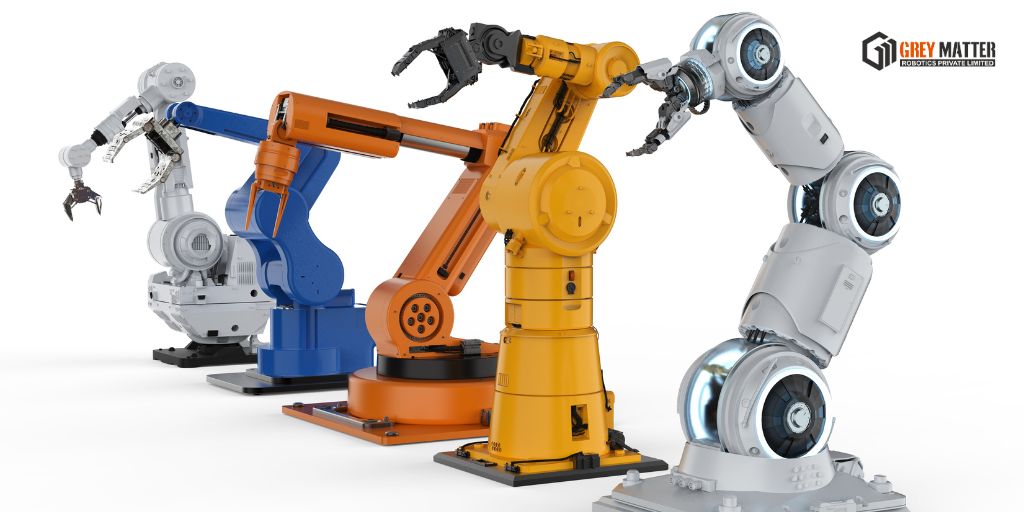Revolutionizing Manufacturing with Robotic Arm Integration
Table of Contents

In today’s fast-paced global economy, production must live one step ahead of the rest. Enter robot arm integration—a progressive solution that’s transforming the industry. Whether you’re a Robotic Arm manufacturers in India, engineer, or generation enthusiast, knowing how robotic palms can increase efficiency, safety, and versatility is crucial. This blog will guide you through the necessities of robotic arm integration, its benefits, demanding situations, and destiny tendencies, providing precious insights for those in search of to stay at the leading edge of generation.
Introduction to Robotic Arm Integration
Robotic arm integration refers to incorporating Industrial Robots fingers into manufacturing and engineering operations. However, these hands perform responsibilities formerly performed by people with more precision, velocity, and consistency. The importance of this technology lies in its capability to decorate manufacturing performance, enhance safety requirements, and provide flexibility in manufacturing approaches.
The effect of robot arm integration on contemporary manufacturing can’t be overstated. It has revolutionized how industries function, leading to multiplied productiveness and reduced error charges. Robotic hands are adaptable and may be programmed to handle diverse tasks, making them valuable assets in small-scale and large-scale operations.
Understanding Robotic Arm Integration in Manufacturing
Robotic palms are available in diverse types, each designed for unique applications. The most unusual kinds are articulated robots, SCARA robots, and delta robots. Articulated robots with more than one joint provide flexibility and an extensive range of motion, making them suitable for complicated tasks. SCARA robots, acknowledged for their precision and pace, are ideal for meeting operations, whilst delta robots excel in excessive-speed pick-and-region obligations.
Sensors, actuators, and controllers are critical in robot arm integration. Sensors comment on the surroundings, enabling the robotic to adjust its real-time moves. Actuators, which consist of vehicles and gears, force the robot’s moves, even as controllers function the brain, processing facts and issuing commands to make certain clean operations. Together, those additives create a seamless integration device that complements the robot’s performance and reliability.
Key Benefits of Robotic Arm Integration
One of the primary blessings of robot arm integration is the extensive development in productivity and protection. Robotic hands can paint tirelessly without breaks, leading to better throughput and steady nice. They also can cope with dangerous obligations, decreasing the chance of workplace injuries and developing safer surroundings for human employees.
Case research abounds, showcasing the successful integration of robotic palms across diverse industries. For example, in the automotive industry, robot hands are used for welding, painting, meeting, and leading, which means faster manufacturing and better satisfactory outputs. In the pharmaceutical area, robot fingers take care of delicate tasks, including packaging and labelling, ensuring accuracy and minimizing contamination risks.
Challenges and Solutions in Robotic Arm Integration
Despite its blessings, robot arm integration comes with its set of challenges. These include high initial costs, technical complexities, and the need for skilled employees to operate and hold the robots. Additionally, integrating robotic hands into existing structures may be frightening, requiring cautious planning and execution.
To overcome these hurdles, producers can undertake several strategies.
Investing in education packages for employees ensures they have the competencies needed to paint with robot structures. Collaborating with experienced robotic arm integrators also can streamline the mixing procedure, minimizing disruptions and maximizing blessings. Lastly, staying updated with the ultra-modern improvements in the robot era can assist groups in adapting and evolving their integration strategies efficiently.
Future Trends in Robotic Arm Integration
The destiny of robot arm integration seems promising, pushed via non-stop technological advancements. Emerging developments, including collaborative robots (cobots), AI-powered robots, and the Internet of Things (IoT), are expected to form the next decade of integration. Cobots, designed to work alongside humans, provide stronger protection features and versatility, making them perfect for small and medium-sized companies.
AI-powered robots, ready with device-getting-to-know talents, can adapt to new tasks and improve their overall performance through the years. This opens up new possibilities for automation and customization in production strategies. By permitting seamless verbal exchange among gadgets, the IoT allows for actual-time tracking and optimization of robotic structures, further improving performance and decreasing downtime.
Best Practices for Robotic Arm Integration
Following great practices can ensure a hit implementation for manufacturers and engineers considering robotic arm integration. Start by undertaking a radical assessment of your contemporary strategies to pick out regions wherein robotic palms can add the most cost. Engage with legit robot arm integrators who can offer tailored solutions and guide you throughout the mixing process.
Optimizing the blessings of robot arm generation involves regular protection and updates. Establish a preservation agenda to preserve your robotic systems in pinnacle condition and leverage software updates to beautify capability. Additionally, fostering a culture of continuous improvement within your agency encourages innovation and guarantees you stay ahead of the competition.
Conclusion
Robotic arm integration is redefining the landscape of modern manufacturing, supplying remarkable advantages in terms of efficiency, safety, and versatility. Producers, engineers, and generation enthusiasts can harness their full ability by knowing the intricacies of this generation and staying abreast of rising traits.
Recapping the key factors, we’ve explored the definition and importance of robotic arm integration, its benefits, demanding situations, and future developments. We’ve also mentioned first-rate practices for successful integration. Now is the time to do so. Explore how robotic arm integration can transform your enterprise and stay aggressive in an increasingly computerized world.
For more statistics and personalized assistance, experience is lost when reaching out to our group of specialists. Let’s revolutionize production collectively.
